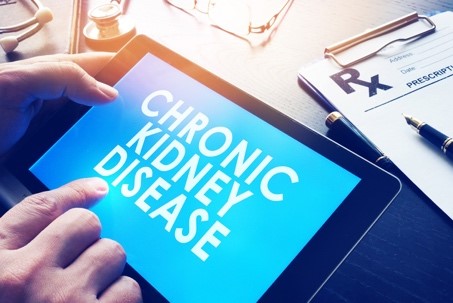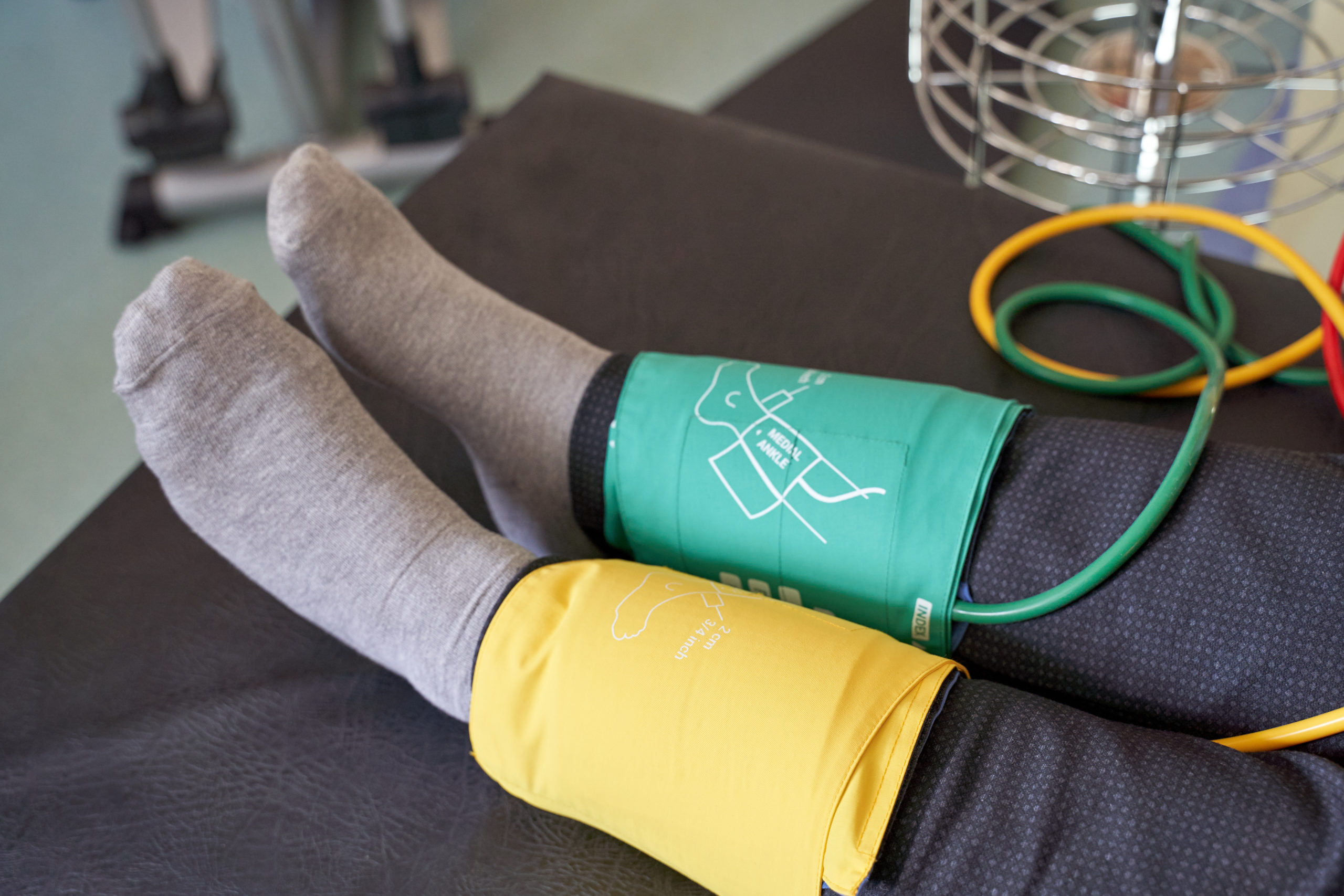
Chronic kidney disease (CKD) is predicted to be the fifth leading cause of death worldwide by 2040. Before 2002, there was no universal definition of CKD. Having an agreed-upon definition has enhanced our understanding of CKD epidemiology, but the term is overly broad, simply referring to a reduction in kidney function. This definition does not account for the wide variety of underlying causes of CKD and the heterogeneity of risk.
To improve understanding, a group of researchers led by Dr. Thomas McDonnell examined outcomes and heterogeneity of risk by primary renal diagnosis (PRD) using data from the National Unified Renal Translational Research Enterprise (NURTuRE)-CKD, a large, prospective study of patients receiving care in UK nephrology clinics. The researchers also investigated how estimated glomerular filtration rate (eGFR) and albuminuria, risk factors commonly used to determine progression to kidney failure (KF), perform among different PRD to see if a more personalized approach to CKD care is needed. Their findings were published in the American Journal of Nephrology.
NURTuRE-CKD recruited 2,996 adults from 16 nephrology centers across the United Kingdom. All participants had an eGFR of 15 to 59 mL/min/1.73 m2 or eGFR ≥60 mL/min/1.73 m2 with a urine albumin-to-creatinine ratio (uACR) greater than 30 mg/mmol. Participants’ outcome-related data (deaths, initiation of kidney replacement therapy [KRT]) and biochemistry results generated during clinical care (including ongoing eGFR measurements through December 31, 2022) were collected from the UK Renal Registry. Use of angiotensin-converting enzyme inhibitors or receptor blockers was also noted.
The primary outcome was a combined outcome of KF: the first event of (1) eGFR lower than 15 mL/min/1.73 m2 for a sustained period of at least 28 days or (2) initiation of KRT (hemodialysis or peritoneal dialysis), or (3) kidney transplantation. Secondary outcomes included elements of the primary outcome (KRT, transplant, and eGFR <15 mL/min/1.73 m2), eGFR slope (eGFR slope over time in mL/min/1.73 m2/year), and all-cause mortality (including only deaths before the primary outcome of KF). Researchers calculated eGFR slope using linear regression from all available values from the date of enrollment in participants with a minimum of three eGFR values over a minimum of 12 months.
Baseline and outcome variables were provided for the entire cohort according to primary CKD diagnosis from clinical records using European Renal Association–European Dialysis and Transplant Association codes. The glomerular disease group was further broken into glomerulonephritis (GN) and vasculitis groups to highlight their differences.
Categorical variables were conveyed as numbers (percentage total), and continuous variables were conveyed as median (interquartile range). Covariates across PRD were compared. Categorical variables were compared using the χ2 test, and continuous variables were compared using the Kruskal-Wallis test. P<.05 was considered statistically significant.
Linear regression was used to calculate post-enrollment eGFR, and Spearman’s correlation was used to analyze the relationship between baseline eGFR and eGFR slope. Multivariable Cox proportional hazards regression models were used to assess the time to KF across different PRD. Adjustments were made for age, sex, baseline eGFR, modifiable risk factors, renin-angiotensin-aldosterone system inhibitors, blood pressure, and hemoglobin A1c (HbA1c).
The Fine and Gray subdistribution hazard model was used to address competing risk of death before KF, and adjustments were made for the same covariates as in the Cox proportional hazards models to warrant consistency across analyses and allow a direct comparison of the impact of competing risks.
The multivariable Cox proportional hazards regression model was used to evaluate the added perceptive value of albuminuria in addition to eGFR and other notable covariates. The predictive performance of the Cox model was assessed with Harrell’s C-index, and the Net Reclassification Index (NRI) was used to quantify the improvement in prediction accuracy with the addition of uACR.
A total of 2,638 participants were included in the analysis. Their median age was 67 years, 58.8% were male, and 86.6% were White. Median eGFR was 33.5 mL/min/1.73 m2 and median uACR was 29.8 mg/mmol. Eighty-five percent of participants had hypertension and 30.5% had type 1 or 2 diabetes.
Median follow-up was 49.2 months. During that time, 630 (23.9%) participants experienced KF, and 352 (13.3%) died before KF. Of the participants who had KF, 45 (7.1%) began hemodialysis or peritoneal dialysis, nine (2.5%) had a kidney transplant, and 576 (91.4%) experienced a sustained eGFR lower than 15 mL/min/1.73 m2. The median eGFR slope for the full cohort was −1.97 mL/min/1.73 m2/year.
Significant differences in risk were observed across PRD and remained after adjusting for age, sex, baseline eGFR, and modifiable risk factors including blood pressure, HbA1c, and renin-angiotensin-aldosterone system inhibitors. The greatest risk occurred within diabetic kidney disease (DKD), GN, and familial/hereditary nephropathy groups.
The highest rates of KF (35.7%) occurred in the DKD group, followed by the familial/hereditary group (30.5%). Tubulointerstitial disease and vasculitis were associated with a low risk of KF. Rates of death were highest in the systemic diseases (25%) and DKD (22.2%) groups.
The familial/hereditary and DKD groups had the most rapid progression. The median eGFR slope was −3.5 mL/min/1.73 m2/year (range, −5.3 to −2.1 mL/min/1.73 m2/year) for the familial/hereditary group and −3.2 mL/min/1.73 m2/year (range, −5.3 to −1.0 mL/min/1.73 m2/year) for DKD group. The tubulointerstitial and vasculitis groups had the slowest progression. The eGFR slope was −1.0 mL/min/1.73 m2/year (range, −3.3 to +0.6 mL/min/1.73 m2/year) for the tubulointerstitial group and −0.6 mL/min/1.73 m2/year (range, −2.8 to +1 mL/min/1.73 m2/year) for the vasculitis group.
Although eGFR had good predictive accuracy across all PRD, the addition of uACR had a variable benefit depending on the PRD. The most significant benefit was observed in the vasculitis, renal vascular, and DKD groups (NRI, 21.1%, 13.4%, and 8.8%, respectively). However, uACR added minimal predictive value to the GN and familial/hereditary groups.
The researchers noted a few limitations of their study, including residual heterogeneity within each subgroup. In the GN group, for example, they had to balance the need for additional segmentation with the need to maintain adequate statistical power to determine differences between groups. In addition, findings in the predominantly White UK secondary care cohort may not be generalizable to other populations or care settings.
In summary, the study showed that there are significant differences in the risk of kidney-related outcomes across various primary renal diagnoses. Those differences persisted even after adjusting for age, sex, and baseline eGFR. The researchers wrote, “Defining CKD by GFR and albuminuria category alone risks neglect of important cause-specific impact on prognosis and treatment. The discriminatory ability of albuminuria as a biomarker of progression varies by diagnosis, which reflects differences in the mechanisms of disease progression. Our data support the notion that in this era of precision medicine, CKD care should be personalized and always consider the PRD.”
Source: American Journal of Nephrology







 © 2025 Mashup Media, LLC, a Formedics Property. All Rights Reserved.
© 2025 Mashup Media, LLC, a Formedics Property. All Rights Reserved.